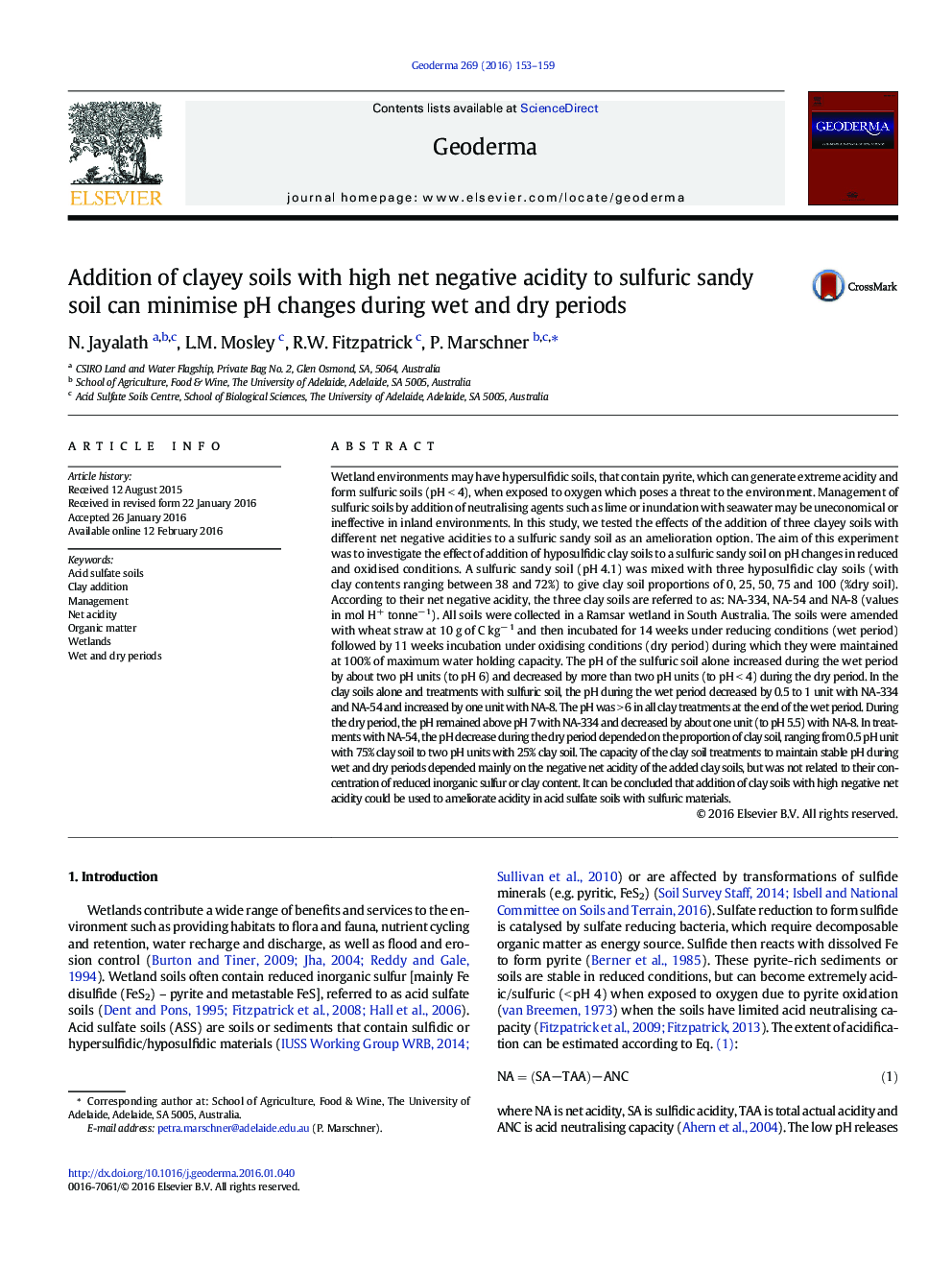| کد مقاله | کد نشریه | سال انتشار | مقاله انگلیسی | نسخه تمام متن |
|---|---|---|---|---|
| 4573013 | 1629448 | 2016 | 7 صفحه PDF | دانلود رایگان |
• Sandy sulfuric soil was mixed with varying proportions of clayey soils.
• Soils were exposed to a wet (reducing conditions) and dry period (oxidation).
• Addition of clay soils with high net negative acidity minimises acidification upon oxidation.
• Net negative acidity of clay soils is more important than pyrite concentration.
Wetland environments may have hypersulfidic soils, that contain pyrite, which can generate extreme acidity and form sulfuric soils (pH < 4), when exposed to oxygen which poses a threat to the environment. Management of sulfuric soils by addition of neutralising agents such as lime or inundation with seawater may be uneconomical or ineffective in inland environments. In this study, we tested the effects of the addition of three clayey soils with different net negative acidities to a sulfuric sandy soil as an amelioration option. The aim of this experiment was to investigate the effect of addition of hyposulfidic clay soils to a sulfuric sandy soil on pH changes in reduced and oxidised conditions. A sulfuric sandy soil (pH 4.1) was mixed with three hyposulfidic clay soils (with clay contents ranging between 38 and 72%) to give clay soil proportions of 0, 25, 50, 75 and 100 (%dry soil). According to their net negative acidity, the three clay soils are referred to as: NA-334, NA-54 and NA-8 (values in mol H+ tonne− 1). All soils were collected in a Ramsar wetland in South Australia. The soils were amended with wheat straw at 10 g of C kg− 1 and then incubated for 14 weeks under reducing conditions (wet period) followed by 11 weeks incubation under oxidising conditions (dry period) during which they were maintained at 100% of maximum water holding capacity. The pH of the sulfuric soil alone increased during the wet period by about two pH units (to pH 6) and decreased by more than two pH units (to pH < 4) during the dry period. In the clay soils alone and treatments with sulfuric soil, the pH during the wet period decreased by 0.5 to 1 unit with NA-334 and NA-54 and increased by one unit with NA-8. The pH was > 6 in all clay treatments at the end of the wet period. During the dry period, the pH remained above pH 7 with NA-334 and decreased by about one unit (to pH 5.5) with NA-8. In treatments with NA-54, the pH decrease during the dry period depended on the proportion of clay soil, ranging from 0.5 pH unit with 75% clay soil to two pH units with 25% clay soil. The capacity of the clay soil treatments to maintain stable pH during wet and dry periods depended mainly on the negative net acidity of the added clay soils, but was not related to their concentration of reduced inorganic sulfur or clay content. It can be concluded that addition of clay soils with high negative net acidity could be used to ameliorate acidity in acid sulfate soils with sulfuric materials.
Journal: Geoderma - Volume 269, 1 May 2016, Pages 153–159
